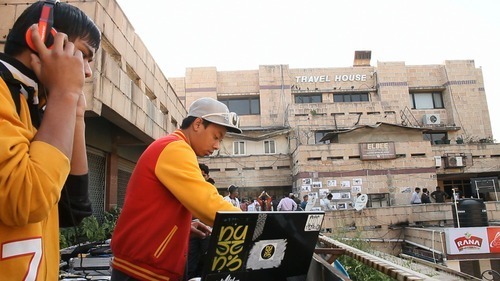Journaling Khirki #1
- Raghav

- Jul 10, 2020
- 3 min read
Updated: Jul 13, 2020
As I attempt to reconcile my research with the travel restrictions imposed upon us all during this Pandemic, I have attempted new ways of gathering qualitative insights into my project site - Khirki Extension, New Delhi. One of these was looking at the work being done by KhirkeeVoice, a bilingual newsletter (Hindi and English) managed by KHOJ. KHOJ is an NGO based out of Khirki, that primarily supports local artists. This being said, KHOJ has done so much more than simply that, from organizing community events, interviewing and documenting the stories, successes and journeys of Khirki's residents, to advocating for social justice in the settlement - KHOJ is the backbone of artistic and cultural milieu in Khirki.
KhirkeeVoice has done nearly 9 issues of newsletters spanning about 5 years (going back to 2014-2015). This issues cover a wide range of information regarding Khirki, including:
1) Interviews with local residents and business owners
2) News regarding recent activities, crimes, issues and concerns of the settlement
3) Celebrating local talent and endeavors
4) Advertising local businesses
5) Raising important questions regarding the fate and future of Khirki
6) Illustrations that depict aspects of Khirki Life

And so many more insights into what life in Khirki is all about. I decided it would be an appropriate starting point to read through these newsletters, to better understand the context in which I aim to induce positive change, through design. As an architect and designer, thinking and comprehending happens along a graphic and spatial spectrum. Hence, I decided to convert each one of the issues I read into a series of illustrations, that give these stories a graphic and spatial setting.
This particular post is about the 9th KhirkeeVoice Issue
(June-September 2019)
1) Caste and Khirki's "Moral" Police uncles

"Kya hum Insan nahi hai ?" (Aren't we humans ?)
The first illustation is about Chaudhary Puran, an 85 year old retired government sector gardner who belongs to the Chamar or Jatav community (untouchables). He talks about how caste based prejudice is persistent till today in Khirki's interiors, and how certain streets get labelled as such. This prejudice extends into economic hardship for his family as he finds it hard to find daily wage labor, or sell his house and move out of Khirki.
2) Khirki's entrepreneurs and casteists

Tapris (Shanty Tea Stalls) become a common place for community gossip, and conversations about the increasing presence of lower caste communities in Khirki. Upper castes converse about the potential "horror" of such communities entering their sacred spaces. Meanwhile, stories about young women entrepreneurs starting their own businesses captivate the community - Like Roohan Single, who started KeterooBakes, a ketogenic bakery from her home. A typical house in Khirki is described, with a photo of Dr. B.R. Ambedkar, a lower caste individual who drafted the Indian Constitution, hangs on the brightly colored walls of many of Khirki's homes.
3) Khirki's Arts, Music and Cultural Milieu

Hidden under the density, chaos and fast paced life of Khirki, is a world of artists, musicians and creatives exploring their passion. I discovered that Khirki has it's own cultural festival that happens in an old community complex called Triveni Commercial Complex, built in the 1980s. It also has it's very own street hip-hop group called KHIRKEE17. These festivals are an excellent opportunity for Khirki's vast community of afghan, Arabian and east-African migrants to share their culture with locals.
"Diverse members of city blocks come together and set up flea markets, food stalls, games, films, dance and music - they experience not only the coming together of food and clothing habits, but also cultural sounds and celebration practices"
A few images from the 9th Issue of KhirkeeVoice:


Full KhirkeeVoice 9th Issue:


























Comments